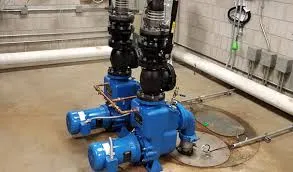Amharic
- Afrikaans
- Albanian
- Amharic
- Arabic
- Armenian
- Azerbaijani
- Basque
- Belarusian
- Bengali
- Bosnian
- Bulgarian
- Catalan
- Cebuano
- Corsican
- Croatian
- Czech
- Danish
- Dutch
- English
- Esperanto
- Estonian
- Finnish
- French
- Frisian
- Galician
- Georgian
- German
- Greek
- Gujarati
- Haitian Creole
- hausa
- hawaiian
- Hebrew
- Hindi
- Miao
- Hungarian
- Icelandic
- igbo
- Indonesian
- irish
- Italian
- Japanese
- Javanese
- Kannada
- kazakh
- Khmer
- Rwandese
- Korean
- Kurdish
- Kyrgyz
- Lao
- Latin
- Latvian
- Lithuanian
- Luxembourgish
- Macedonian
- Malgashi
- Malay
- Malayalam
- Maltese
- Maori
- Marathi
- Mongolian
- Myanmar
- Nepali
- Norwegian
- Norwegian
- Occitan
- Pashto
- Persian
- Polish
- Portuguese
- Punjabi
- Romanian
- Russian
- Samoan
- Scottish Gaelic
- Serbian
- Sesotho
- Shona
- Sindhi
- Sinhala
- Slovak
- Slovenian
- Somali
- Spanish
- Sundanese
- Swahili
- Swedish
- Tagalog
- Tajik
- Tamil
- Tatar
- Telugu
- Thai
- Turkish
- Turkmen
- Ukrainian
- Urdu
- Uighur
- Uzbek
- Vietnamese
- Welsh
- Bantu
- Yiddish
- Yoruba
- Zulu
Telephone: +86 13120555503
Email: frank@cypump.com
ነሐሴ . 15, 2024 02:42 Back to list
Understanding the Functionality and Importance of Bathroom Ejector Pumps in Modern Homes
Understanding Bathroom Ejector Pumps A Comprehensive Guide
When discussing plumbing and drainage systems, one might not immediately consider the role of a bathroom ejector pump. However, this essential device is crucial in many homes, particularly those with below-grade bathrooms. In this article, we’ll explore what a bathroom ejector pump is, how it functions, its importance, and some key factors to consider when choosing one.
What is a Bathroom Ejector Pump?
A bathroom ejector pump, often referred to as a sewage pump or macerating pump, is a type of sump pump specifically designed to transport wastewater from a lower level bathroom to the main sewer line. These systems are particularly useful in homes that have a basement or any bathroom that is lower than the main sewage line. Traditional gravity-based drainage systems may not suffice in these scenarios, making ejector pumps a vital component of the plumbing setup.
How Does It Work?
The operation of a bathroom ejector pump is relatively straightforward yet ingenious. When waste water from fixtures such as toilets, sinks, or showers is flushed or drained, it flows into a holding tank that contains the pump. Once the water reaches a certain level, a float switch is activated, which turns on the pump.
The pump then uses a motor to grind solid waste and toilet paper into a fine slurry. This is an essential step, as it allows the solid materials to be easily pumped through smaller pipes without clogging. The ejector pump then channels this slurry through a discharge pipe upwards to the sewer line, ensuring efficient removal of all waste.
Importance of Bathroom Ejector Pumps
The significance of bathroom ejector pumps cannot be overstated. For homes with basements or below-grade bathrooms, ejector pumps enable the installation of sanitary bathrooms where it would otherwise be impractical. They help to prevent sewage backups, minimize foul odors, and protect the integrity of the household plumbing system.
Moreover, ejector pumps are designed to handle a variety of waste products, ensuring that not only liquid waste but also solid materials can be effectively managed. This versatility makes them an ideal solution for both residential and commercial bathrooms that are not on the main level of plumbing systems.
bathroom ejector pump

Choosing the Right Ejector Pump
When selecting a bathroom ejector pump, there are several factors to consider
1. Power and Capacity Look for a pump that provides sufficient power (usually measured in horsepower) to handle the volume of wastewater produced. Assess the capacity of the pump to ensure it can manage the expected inflow without issues.
2. Material and Build Quality Choose a pump made from durable materials that are resistant to corrosion and wear over time. Cast iron and thermoplastic are common materials used in robust ejector pumps.
3. Noise Level Some ejector pumps can be quite noisy during operation. Opt for models designed for quiet operation, especially if the unit is near living spaces.
4. Maintenance Needs Consider how easy it is to access and maintain the pump. Regular inspections and maintenance will extend the life of the unit and ensure it operates efficiently.
5. Warranty and Support A good warranty and reliable customer support can provide peace of mind and help address any potential issues with the pump.
Conclusion
In summary, a bathroom ejector pump is an essential component for homes with below-grade bathrooms, providing a reliable solution for waste management. Understanding how these pumps work and what to consider when selecting one can make a significant difference in maintaining an efficient plumbing system. With the right ejector pump, homeowners can ensure that their bathrooms function optimally, regardless of their position in relation to the main sewer line.
-
ISG Series Vertical Pipeline Pump - Chi Yuan Pumps Co., LTD.|High Efficiency, Energy Saving, Low Noise
NewsJul.30,2025
-
ISG Series Vertical Pipeline Pump- Chi Yuan Pumps|High Efficiency&Low Noise
NewsJul.30,2025
-
ISG Series Vertical Pipeline Pump-Chi Yuan Pumps Co., LTD.|High Efficiency&Energy Conservation
NewsJul.30,2025
-
ISG Series Vertical Pipeline Pump - Chi Yuan Pumps Co., LTD.|Advanced Hydraulic Design&Energy-Efficient Solutions
NewsJul.30,2025
-
ISG Series Vertical Pipeline Pump - Chi Yuan Pumps Co., LTD.
NewsJul.30,2025
-
ISG Series Vertical Pipeline Pump - Chi Yuan Pumps Co., LTD.|energy-efficient fluid handling&industrial durability
NewsJul.30,2025










